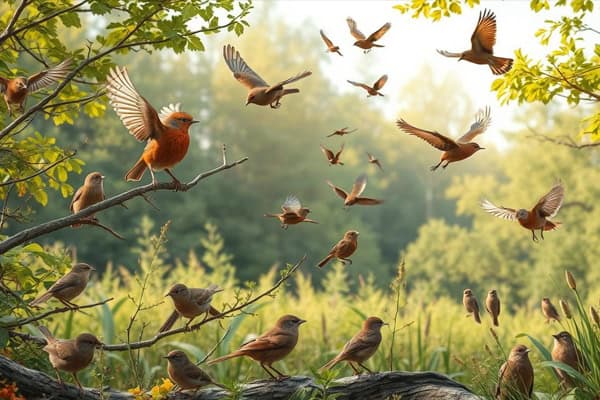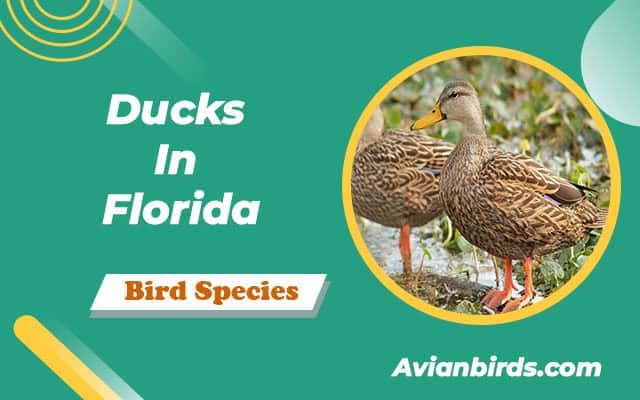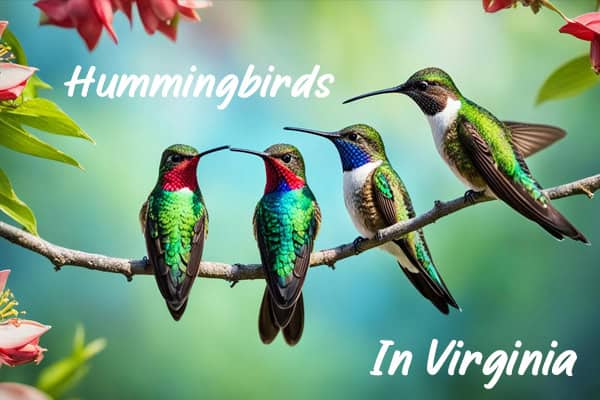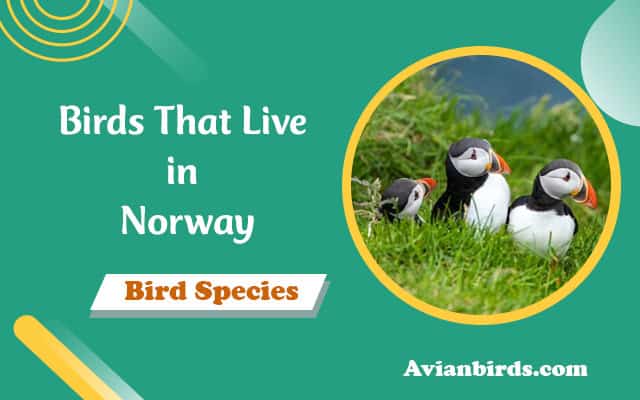12 Types of Small Birds With Long Necks (ID Guide)
Did you know some of the world’s most elegant birds have necks up to three times their body length? These small birds with long necks are not just beautiful. They also play key roles in their ecosystems. In this guide, we’ll explore the unique features, habitats, and behaviors of 12 remarkable long-necked birds.
Whether you’re an experienced birdwatcher or just starting, our insights and tips will deepen your appreciation for these avian wonders.
The Purpose of Long Necks in Birds
Long necks in birds are key to their survival and finding food. They help birds see better, letting them spot dangers and food from far away. This is very important in places where birds face many threats.
For wading birds, long necks are a big plus. They let these birds reach deep into the water for fish or search the bottom of shallow waters for food. This shows how birds’ bodies change to fit their living spaces.
The main reason birds have long necks is not just for looks. These features are vital for survival. They help birds live well in their homes.
Common Habitats for Long-Necked Birds
Long-necked birds live in many places that fit their needs. They call wetlands, marshes, coastal areas, and big grasslands home. These places give them what they need to eat and nest.
Herons and egrets love shallow water. They hunt fish and amphibians with ease in these spots. The ostrich, on the other hand, lives on the open plains. It uses its long neck to see predators from far away.
Here’s a table showing where long-necked birds live and some examples of species you can find there:
| Habitat Type | Examples of Long-Necked Birds |
|---|---|
| Wetlands | Great Egret, Goliath Heron |
| Marshes | Tricolored Heron, Little Blue Heron |
| Coastal Areas | Great Blue Heron, Snowy Egret |
| Grasslands | Ostrich, Emu |
| Forests | Southern Cassowary |
These different places support many bird species. They also let us watch these birds up close. Learning about their homes helps us value their adaptability and strength.
Different Types of Small Birds With Long Necks
Long-necked bird species are truly fascinating. Each type has unique traits that help them survive. Let’s dive into these small birds and see what makes them special.
1. Ostrich
- Scientific Name: Struthio camelus
- Size: 2.1–2.7 m (6.9–8.9 ft)
- Weight: 63–145 kg (139–320 lb)
- Lifespan: 40–45 years (wild); up to 70 years (captivity)
- Diet: Grasses, seeds, fruits, insects, and small animals
The ostrich is super fast, reaching heights of 6.9 to 9 feet. Found in Africa, its long neck helps it spot predators like lions and cheetahs from afar.
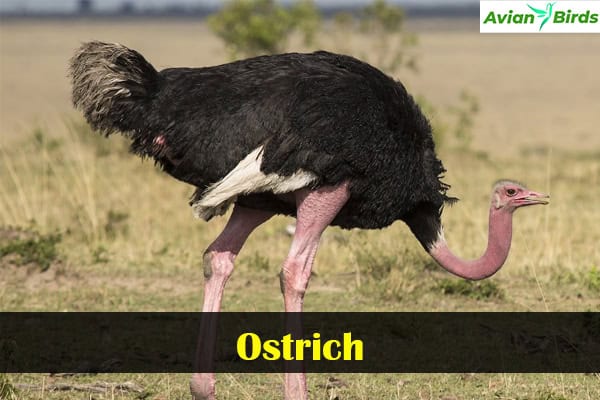
2. Emu
- Scientific Name: Dromaius novaehollandiae
- Size: 1.5–2 m (4.9–6.6 ft)
- Weight: 18–60 kg (40–132 lb)
- Lifespan: 10–20 years in the wild; up to 35 years in captivity
- Diet: Grasses, seeds, fruits, and insects
The emu, a bird from Australia, has shaggy feathers. Its long neck is great for looking out for food during the day.

3. Goliath Heron
- Scientific Name: Ardea goliath
- Size: 120–150 cm (47–59 in) in height
- Weight: 4–5.5 kg (8.8–12.1 lb)
- Lifespan: 15–25 years in the wild
- Diet: Fish, amphibians, and crustaceans
The Goliath heron stands at 5 feet tall. It’s a skilled fisherman in Africa and parts of India. Its long neck lets it fish stealthily.
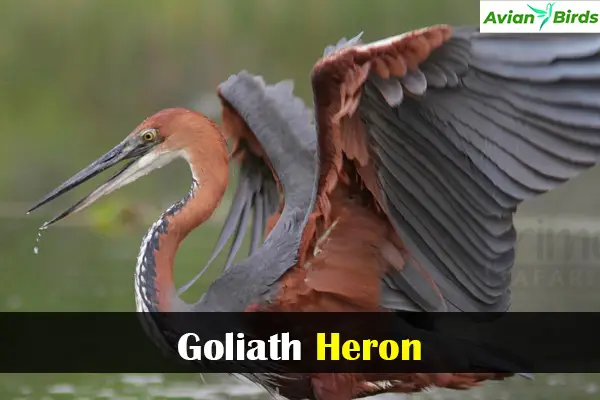
4. Great Egret
- Scientific Name: Ardea alba
- Size: 85–100 cm (33–39 in) in height
- Weight: 700–1,500 g (1.5–3.3 lb)
- Lifespan: 15–25 years
- Diet: Fish, amphibians, reptiles, and small mammals
Great egrets are known for their long legs. They live in shallow waters and are loved by birdwatchers for their beauty and grace.
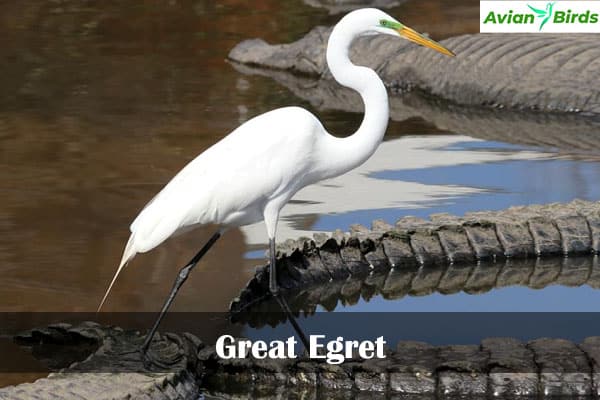
5. Anhinga
- Scientific Name: Anhinga anhinga
- Size: 76–90 cm (30–35 in) in length
- Weight: 1.5–2.5 kg (3.3–5.5 lb)
- Lifespan: 5–10 years in the wild
- Diet: Fish, amphibians, and small invertebrates
Called the “snake bird,” the anhinga swims with its neck above water. This unique way of swimming shows its hunting skills and adaptability.

6. Trumpeter Swan
- Scientific Name: Cygnus buccinator
- Size: 132–165 cm (52–65 in) in length
- Weight: 8–14 kg (17–31 lb)
- Lifespan: 20–30 years in the wild
- Diet: Aquatic vegetation, grains, and some invertebrates
Trumpeter swans are big and live in North America. They have snowy feathers and long necks for underwater grazing.
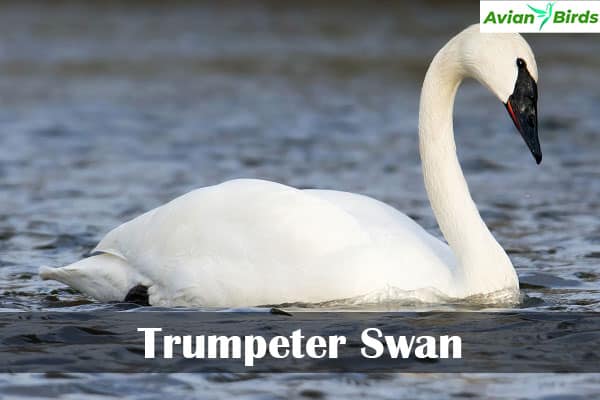
7. Sandhill Cranes
- Scientific Name: Antigone canadensis
- Size: 81–100 cm (32–39 in) in height
- Weight: 4.5–6.5 kg (10–14.3 lb)
- Lifespan: 20–30 years in the wild
- Diet: Seeds, grains, insects, and small animals
Sandhill cranes Small Birds With Long Necks live in North America and migrate seasonally. They have long necks to spot threats from far away in the grasslands.
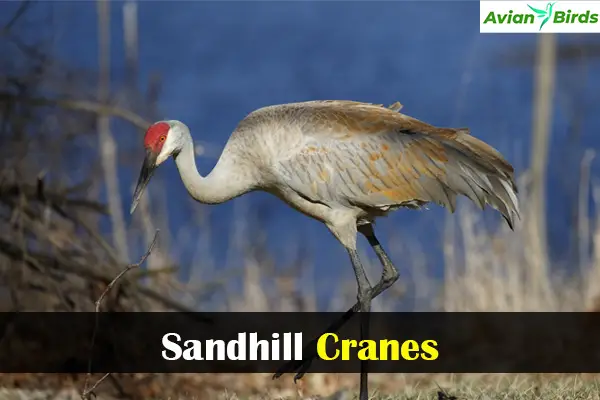
8. Southern Cassowary
- Scientific Name: Casuarius casuarius
- Size: 1.5–1.8 m (4.9–5.9 ft) in height
- Weight: 58–85 kg (128–187 lb)
- Lifespan: 40–50 years in the wild
- Diet: Fruits, seeds, and small animals
The southern cassowary is a large bird that can’t fly. It has a long neck with bright colors, making it both beautiful and dangerous.
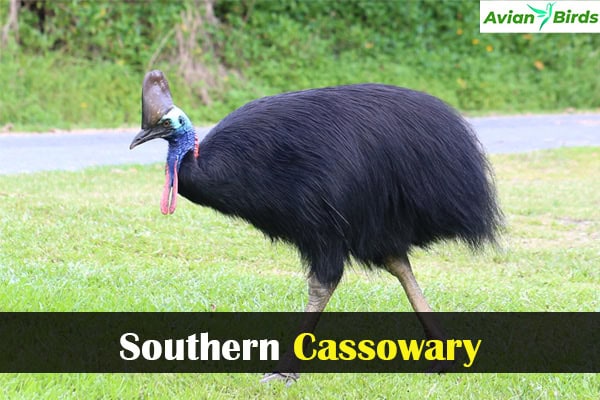
9. Little Blue Heron
- Scientific Name: Egretta caerulea
- Size: 66–76 cm (26–30 in) in height
- Weight: 400–600 g (0.88–1.32 lb)
- Lifespan: 15 years in the wild
- Diet: Fish, amphibians, and small invertebrates
Little blue herons have elegant necks and live near water. They catch small fish and amphibians with skill, showing how they identify their prey.
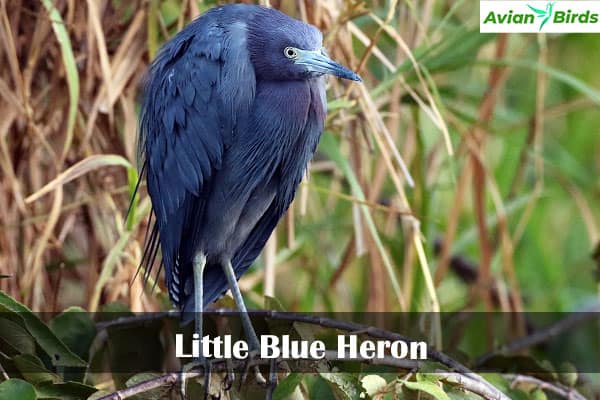
10. White Ibis
- Scientific Name: Eudocimus albus
- Size: 65–75 cm (26–30 in) in length
- Weight: 1.5–2.5 kg (3.3–5.5 lb)
- Lifespan: 16 years in the wild
- Diet: Insects, crustaceans, and small fish
White ibises live by the coast and are social birds. They have long necks and bills perfect for digging in the mud for food.

11. Tricolored Heron
- Scientific Name: Egretta tricolor
- Size: 60–70 cm (24–28 in) in height
- Weight: 300–500 g (0.66–1.1 lb)
- Lifespan: 15 years in the wild
- Diet: Fish, crustaceans, and amphibians
Tricolored herons are medium-sized and stand out with their unique colors. They live in shallow water and have distinct feeding habits.
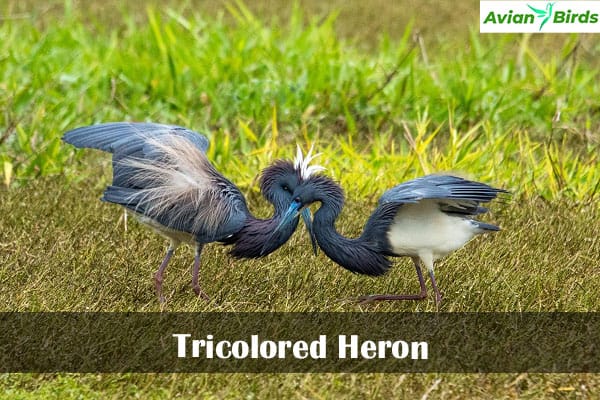
12. Greater Flamingo
- Scientific Name: Phoenicopterus ruber
- Size: 100–150 cm (39–59 in) in height
- Weight: 3.5–4.5 kg (7.7–9.9 lb)
- Lifespan: 20–30 years in the wild
- Diet: Algae, crustaceans, and small invertebrates
Greater flamingos are known for their pink color. They use their long necks to filter food from the water, showing their unique way of eating.

How to Identify Small Birds With Long Necks
Identifying long-necked birds means looking at their size, color, and bill shape. These features help us spot them in the wild. Some birds also show their nature through how they eat, giving us more clues.
The neck’s length and shape are key to identifying them. A thin neck might mean it’s a Great Egret, while a thicker neck could be a Goliath Heron. Knowing this helps us better identify birds.
It’s also important to know where these birds live. Long-necked birds often prefer certain places like wetlands or coasts. Learning about these spots helps us spot them in the wild.
| Feature | Example Species | Notes |
|---|---|---|
| Neck Shape | Great Egret | Thin, elongated neck suitable for wading |
| Feeding Habits | Little Blue Heron | Often hunts by stealth in shallow waters |
| Plumage Color | Greater Flamingo | Distinctive pink coloration with long legs and neck |
| Bill Shape | White Ibis | Curved bill adapted for probing muddy shores |
Birdwatching Tips for Spotting Long-Necked Birds
When we go birdwatching, using the right techniques is key to seeing long-necked birds. Being patient and quiet helps a lot. Binoculars let us get a closer look without bothering the birds.
When is the best time to watch birds? Early morning or late afternoon are best. These times are when long-necked birds are most active. Knowing their sounds and behaviors helps us spot them easily in the wild.
- Use binoculars to get a closer view without intruding.
- Visit during the early morning or late afternoon for better activity levels.
- Learn about their calls and typical behaviors to identify when and where to look.
- Remain quiet and still to avoid startling the birds.
- Choose locations known for their long-necked bird population.
Following these tips can make our birdwatching trips more rewarding. We’ll have unforgettable moments watching long-necked birds in their natural setting.
Read More🐦Related Articles:
| Small Green Birds in Florida |
| Baby Mourning Doves |
| Red Sparrow Bird |
| Small Brown Birds In Florida |
| Hawks in San Diego |
Conclusion
Exploring small birds with long necks shows us a world full of diversity. Species like the Great Egret and Anhinga each add their own special touch to nature. They play key roles in our ecosystems.
Birdwatching lets us get up close with these amazing birds. It’s more than just watching; it connects us to nature and helps us understand why we need to protect these birds. By enjoying and learning about them, we help spread the word about conservation.
Let’s work together to protect the homes of these incredible birds. By doing so, we make sure future generations can also marvel at their beauty in the wild.



